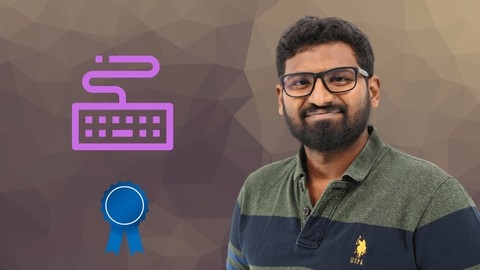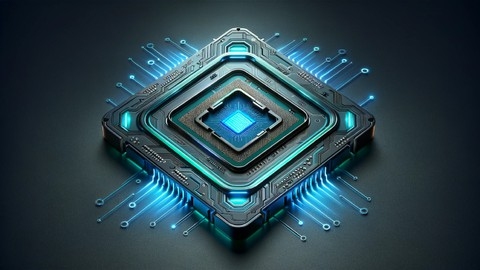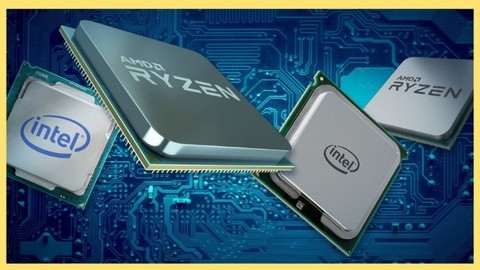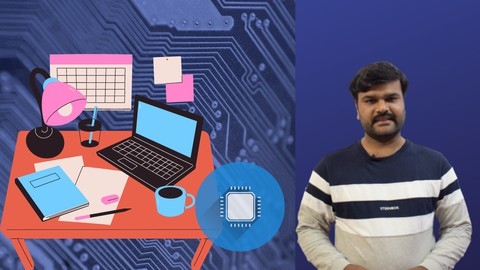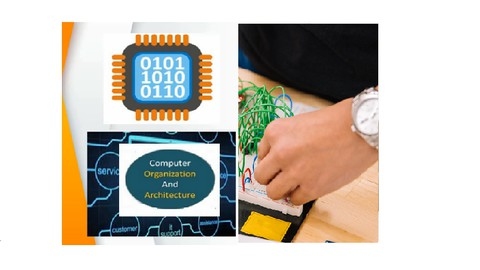Computer architecture is the foundation upon which all modern computers are built.
It’s the study of how hardware components like the CPU, memory, and input/output devices interact to execute programs and process information.
Understanding computer architecture is crucial for anyone wanting to build, design, or even just optimize computer systems.
Finding the right computer architecture course on Udemy can be a challenging task, with so many options available.
You want a course that’s comprehensive, engaging, and taught by experts, but also fits your learning style and goals.
We’ve carefully reviewed numerous Udemy courses and have identified Computer Architecture & Organization Part 1 : Cache Memory as the best overall course.
This course stands out for its deep dive into cache memory, a crucial component of modern computer systems.
It covers mapping techniques like direct mapping, associative mapping, and set associative mapping, and explores various cache replacement policies like LRU, FIFO, and MRU.
While this is our top pick, there are other great options available on Udemy for various levels of learners and specific interests.
Keep reading for more recommendations and find the perfect computer architecture course for your journey.
Computer Architecture & Organization Part 1 : Cache Memory
This comprehensive syllabus covers various mapping techniques used in cache memory, an essential concept in computer architecture.
The course begins with an introduction to direct mapping, where you’ll learn the basic idea through examples.
It then dives into solving problems related to direct mapping, covering important points like the number of comparators, size of comparators, and the disadvantage of direct mapping compared to other techniques.
Next, you’ll explore associative mapping, another mapping technique used in cache memory.
The syllabus includes lectures explaining associative mapping and its nuances, followed by a dedicated section with problems to reinforce your understanding.
The course then moves on to set associative mapping, a hybrid approach combining aspects of direct and associative mapping.
You’ll learn how set associative mapping works, calculate the number of comparators and conflict misses, and practice with a set of problems specific to this technique.
As you progress, you’ll encounter advanced problems that test your grasp of all the mapping techniques covered so far.
These challenging exercises will solidify your knowledge and prepare you for real-world scenarios.
The syllabus also covers the difference between words and bytes in computer memory, addressing systems (byte and word addressable), and how these concepts relate to cache memory organization.
Importantly, the course delves into cache replacement policies, which determine how data is replaced in the cache when it becomes full.
You’ll learn about popular algorithms like Least Recently Used (LRU), First-In-First-Out (FIFO), and Most Recently Used (MRU), and how they apply to associative and set associative mapping.
Throughout the course, you’ll encounter numerous problems and exercises that reinforce the concepts covered in each section.
These hands-on activities will help you gain a deeper understanding of cache memory and its implementation.
Computer Organization and Architecture
This course delves into the heart of computer architecture, offering a comprehensive exploration of how hardware and software work together.
You’ll start by understanding the fundamental building blocks of a computer, like the CPU, its organization, and how it interacts with memory.
Get ready to dive into the world of data representation, learning how numbers, characters, and other information are stored and manipulated within a computer.
You’ll be introduced to various methods for performing arithmetic operations, such as addition and multiplication, and explore techniques like Booth Multiplication and the Carry Save Multiplier.
The course also delves into the intricacies of division, examining algorithms like Restoring and Non-Restoring Division.
This is not just theory; you’ll gain a practical understanding of how these methods are applied in real-world scenarios.
Moving beyond the CPU, you’ll learn how computers interact with the external world.
You’ll discover the inner workings of peripheral devices like keyboards, printers, and hard drives, and understand how they communicate with the computer through interfaces like SCSI and USB.
You’ll also explore various I/O transfer methods and their importance in ensuring data flows smoothly.
The course then takes you into the exciting realm of pipelining, a technique used to enhance processing speed by overlapping stages of instruction execution.
You’ll learn about the potential challenges, known as pipeline hazards, and strategies to overcome them.
You’ll also be introduced to the concept of parallel processing, where multiple processors work in tandem to tackle complex tasks.
Finally, you’ll explore the fascinating world of memory organization.
You’ll learn about the structure of semiconductor memory, and delve into various techniques used to manage data within the memory hierarchy.
This includes concepts like mapping functions, replacement algorithms, and cache coherence, which ensure data consistency across different components of the computer.
This comprehensive course offers a strong foundation in computer architecture, covering both theoretical concepts and practical applications.
If you’re looking for a deep dive into the inner workings of computers, this is a valuable resource.
Design a CPU
This course dives deep into the intricate world of CPU design, starting with the fundamentals and progressively building towards more advanced concepts.
You’ll begin by understanding the essential components of a CPU: registers, the ALU, and the clock.
Using Logisim, a powerful software tool, you’ll construct simple gates and then assemble them into more complex structures like a 1-bit memory cell and an 8-bit register.
You’ll also learn about decoders, essential for accessing memory locations.
The course takes a fascinating approach to automated design, allowing you to create complex systems efficiently.
The heart of the course lies in exploring the Control Section, the brain of the CPU that orchestrates its operations.
You’ll delve into the Fetch Cycle, the process by which instructions are retrieved from memory, and the various instruction types, including arithmetic operations, data transfers, and jumps.
You’ll then delve into the world of Assembly Language, the low-level language used to program CPUs, and gain hands-on experience with an assembler and debugger to write and test programs.
Throughout the course, you’ll design and simulate a CPU, progressing from basic concepts to more sophisticated implementations.
You’ll learn to load and run programs, reset the CPU, and debug code.
The course concludes with a bonus section that explores innovative design techniques and captivating projects.
This includes designing a 16-bit CPU and implementing the Fibonacci sequence in Assembly Language.
You’ll even get a peek behind the scenes with an explanation of the VBA code used for the debugger.
This comprehensive course provides a thorough understanding of CPU architecture and design.
Computer Architecture & Organization Part 2 : Hard Disk
If you’re interested in understanding the inner workings of a computer’s storage system, this course dives deep into the fascinating world of hard disks.
You’ll begin by exploring the fundamental concept of memory organization, learning the key difference between simultaneous and hierarchical memory organization.
This is like figuring out the most efficient way to arrange your bookshelves – you’ll learn how to optimize your computer’s data access!
The course doesn’t stop at theory.
You’ll get hands-on with real-world examples, understanding how different memory types interact to store your data effectively.
Next, you’ll delve into the anatomy of a hard disk, dissecting its components and uncovering the mechanics behind data storage.
You’ll learn to calculate essential metrics like disk capacity, formatted space, and data transfer rate, giving you a clear picture of how quickly data can be accessed.
The course goes even further, teaching you to calculate average disk access time, a crucial factor influencing your computer’s performance.
This course is an excellent resource for anyone who wants to understand the nuts and bolts of computer storage and how it impacts the efficiency of your digital world.
Advanced Computer Architecture & Organization: HD Course
This course offers a comprehensive and in-depth exploration of computer architecture, diving deep into the core concepts that drive how computers function.
You’ll gain a strong understanding of the Instruction Set Architecture, the language your computer uses to interpret commands.
The course also delves into different addressing modes, providing insights into how your computer accesses data.
You’ll explore the contrasting approaches of RISC and CISC architectures, analyzing their unique characteristics and trade-offs.
The course goes beyond the theoretical by focusing on the design of the Central Processing Unit (CPU), guiding you through its structure, register organization, and the execution of instructions.
You’ll gain valuable knowledge about memory management, a crucial aspect of efficient computing, and how the CPU interacts with different types of memory, including the vital role of cache memory.
The course extends to input/output subsystems, teaching you how computers communicate with the outside world.
You’ll also learn about techniques like pipelining, which optimizes instruction execution, and explore various input/output methods.
The course provides a solid foundation in the intricate workings of the control unit, the brain behind the orchestration of instructions.
Computer Organization and Architecture : Scratch to Advance
This course provides a comprehensive exploration of instruction pipelining, a fundamental concept in computer architecture.
You’ll gain a solid understanding of how pipelining accelerates processor performance, starting with a clear explanation of instruction execution without pipelining.
You’ll delve into the core concepts of speed-up factor and clock period, learning how to analyze and quantify the performance gains achieved through pipelining.
The course doesn’t shy away from practical application, incorporating numerical questions that challenge you to apply the concepts you’ve learned.
These problems, ranging from calculating clock cycles to analyzing pipeline stages, will solidify your grasp of the material.
You’ll also explore the potential challenges of pipelining, specifically addressing hazards that can arise when instructions attempt to overlap.
This practical perspective equips you with the knowledge needed to implement and optimize pipelined architectures effectively.
Fundamental Question on Computer Architecture
This course provides a strong foundation in computer architecture, diving deep into the essential concepts that underpin how modern computers function.
You’ll explore the inner workings of the CPU, memory, and input/output devices, understanding how these components interact to execute programs and process information.
Key concepts like instruction sets, data representations, and memory management are covered in detail, giving you a solid grasp of the principles behind efficient system design.
You’ll learn to analyze and compare different architectural designs, gaining insights into the complexities of hardware-software interactions.
While the course focuses on fundamental principles, it doesn’t shy away from addressing real-world applications.
You’ll encounter scenarios that illustrate how these concepts translate into practical engineering solutions.
The inclusion of practice tests allows you to solidify your understanding and build confidence in applying your knowledge to practical challenges.It balances theoretical depth with practical relevance, equipping you with a strong foundation for further exploration in this crucial field.
Computer Organization Computer Architecture Instruction Set
You’ll start by diving into the core principles of computer organization and architecture, understanding the key distinctions between the two.
The syllabus then delves into essential hardware components, including the CPU, memory, and input/output devices.
You’ll explore various memory types, including cache memory, and learn how they contribute to overall system performance.
A valuable portion of the course focuses on data representation, covering important topics like binary, hexadecimal, and ASCII codes.
This knowledge is crucial for understanding how computers process and store information.
The course further explores crucial concepts like memory hierarchy and addressing modes, providing insights into how data is accessed and processed within a computer system.
You’ll also delve into the foundational principles of Boolean Algebra and Logic Circuits, the building blocks of computer operations.
Moving beyond theoretical concepts, the course offers hands-on experience with practical applications.
You’ll learn how to manage files, applications, and system settings within Windows, covering topics like printer installation, using the help system, and optimizing system performance through tools like Disk Cleanup and Defragmentation.
It equips you with the necessary skills for effectively managing computer systems and troubleshooting common issues.

